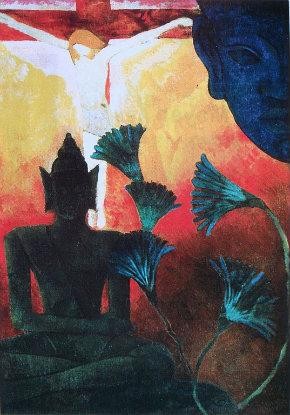The cross and the lotus

The fact that Benedict XVI ended his reign as pope through retirement rather than death makes it somewhat premature to write a retrospective on his time in office. As a great admirer of his, however, I want to comment on one aspect of his work—a global issue on which I think he was in error.
In 2006 Benedict delivered a lecture at Regensburg, Germany, in which he appeared to describe Islam as an evil religion that owed its success to violence and forced conversion. Muslims, naturally, were furious and demanded a retraction. Whatever we think about that furor, media reports ignored another point that Benedict really did make, one which is of far greater significance to Christians. Regensburg should have begun a searching debate about the foundations of Christian theology in a global age.
As he had often done before, Benedict stressed the Greek and Hellenistic roots of Christian thought, which were (he said) inseparable from European civilization. But this time he went still further in his insistence on the Greek component. When we are trying to understand such basic concepts as the incarnation or the Trinity, he suggested, we must always depend on Greek philosophical ideas and terminology, and we will continue to do so, no matter how far Christianity moves outside what was once its Euro-American heartland. Christianity must be read through the light of reason, and reason speaks Greek.





